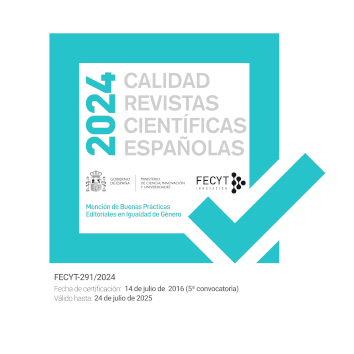Educational policies in the production and distribution of digital didactic materials
DOI:
https://doi.org/10.17398/1695-288X.16.2.63Keywords:
Política Educativa, Administración Educativa, Materiales Educativos Digitales, Tecnología Educativa, Currículo, Educational Policy, Educational Administration, Educational Technology, CurriculumAbstract
This article is an essay that analyzes the changes or mutations that are taking place in the characteristics and functionalities of educational materials in the context of the digital society. It is based on the thesis that the hegemonic didactic material of the modern school (specifically textbooks) responded to the logic of printed culture characterized by packaging knowledge and a standardized and mass curriculum development model. In this S. XXI educational materials are affected by digital transformation whose mutation is described in terms of five dimensions or areas: artifactual or technological, pedagogical, teaching functionality, learning functionality, and production processes, distribution and consumption. It concludes by pointing out that the metamorphosis of the didactic material does not consist only in a change of the technological format, but it must be fundamentally of the cultural story and of the pedagogical functionality of the material.
Downloads
References
Area et al. (2014). Las políticas educativas TIC en España después del Programa Escuela 2.0: las tendencias que emergen. Revista Latinoamericana de Tecnología Educativa - RELATEC, 13(2), 11-33.
Area, M; Sanabria, A.L. y Vega, A. (2013). Las políticas educativas TIC (Escuela 2.0) en las Comunidades Autónomas de España, desde la visión del profesorado. Campus virtuales, 1, II, 74-88
Area, M. y Sanabria, A.L. (2014). Opiniones, expectativas y valoraciones del profesorado participante en el Programa Escuela 2.0 en España. Educar, 50(1), 15-39. https://doi.org/10.5565/rev/educar.64
Balanskat, A.; Bannister, D.; Hertz, B; Sigillò, E. & Vuorikari, R. (2013). Overview and Analysis of 1:1 Learning Initiatives in Europe. JCR Scientific Policy Report. Luxembourg: Publications Office of de European Union.
Casati, R. (2015). Elogio del papel. Contra el colonialismo digital. Barcelona: Ariel.
De Pablos, J. y González Ramírez, T. (2007). Políticas educativas e innovación educativa apoyadas en TIC: Sus desarrollos en el ámbito autonómico. II Jornadas Internacionales sobre Políticas Educativas para la Sociedad del Conocimiento. 7-10 marzo, Granada.
De Pablos, J.; Colás, P. y González Ramírez, T. (2010). Factores facilitadores de la innovación con TIC en los centros escolares. un análisis comparativo entre diferentes políticas educativas autonómicas. Revista de Educación, 352, 23-51.
Fernández, J. P. (2016). La adquisición y desarrollo de la competencia digital en alumnos de educación secundaria. Estudio de caso. Cuadernos de Investigación Educativa, 7(2), 83-98.
Fraga, F. y Alonso, A. (2016). Presencia del libro de texto digital en Galicia: una mirada estadístico-geográfica del proyecto E-DIXGAL. Profesorado, 20(1), 91-112.
Fraga, F. y Duarte, A. (2015). La perspectiva de las familias de un centro educativo digital con modelo 1 a 1: implantación del proyecto E-DIXGAL como desarrollo del plan Escuela 2.0. Innovación Educativa, 25, 309-325.
Lugo, M. T. (2010). Las políticas TIC en la Educación de América Latina. Tendencia y experiencias. Revista Fuentes, 10, 52-68.
Martínez Bonafé, J. (2008) Los libros de texto como práctica discursiva. Revista de la Asociación de Sociología de la Educación. 1(1), 62-73. Recuperado de http.//dialnet.unirioja.es/descarga/articulo/2793153.pdf 23/09/2012
Martínez Bonafé, J. (2010). El currículum y el libro de texto. Una dialéctica siempre abierta. En J. Gimeno (Coor). Saberes e incertidumbres sobre el currículum. Madrid: Morata.
Martín Hernández, S. (2010). Escuela 2.0: Estado de la Cuestión. Boletín SCOPEO Extraordinario, Escuela 2.0, 22 de septiembre de 2010. Recuperado de: http://scopeo.usal.es/index.php?option=com_content&view=article&id=756 &Itemid=73
Martínez Figueroa, M. E. (2006). Políticas autonómicas para la integración de las TIC en los centros educativos. RELATEC, 5(2) 97-112
Peirats, J., Gallardo Fernández, I.M.; San Martín Alonso, A. y Cortés i Mollà, S. (2015). Los contenidos curriculares digitalizados: Voces y silencios en el ámbito editorial. Educatio Siglo XXI, 33(3), 39-62. http://dx.doi.org/10.6018/j/240801
Kozma, R. (2008). Comparative Analysis of Policies for ICT in Education. En Voogt, J. &, Knezek, G (Eds.) International Handbook of Information Technology in Primary and Secondary Education (pp.1083-1096). Berlin: Springer.
Kvale, S. (2011). Las entrevistas en Investigación Cualitativa. Madrid: Morata.
Rodríguez Rodríguez, J. y Rodríguez Regueira, N. (2016). Revisión de la investigación sobre el libro de texto digital en revistas, publicaciones y congresos internacionales de referencia. Profesorado, 20(1), 9-31.
Rodríguez-Machado, E.; Veiga, E. J. y González-SanMamed. M. (2015). O proxecto Abalar e o libro dixital en Galicia (E-DIXGAL). Revista de estudios e investigación en Piscología y Educación, 13. http://dx.doi.org/10.17979/reipe.2015.0.13.592
Sanabria, A.L. y Cepeda, O. (2016). La educación para la competencia digital en los centros escolares: la ciudadanía digital Revista Latinoamericana de Tecnología Educativa – RELATEC, 15(2), pp. 95-112. https://doi.org/10.17398/1695-288X.15.2.95
UNESCO (2008). Estándares de Competencia en TIC para docentes. París: UNESCO.
Downloads
Published
Issue
Section
License
Authors who publish in this journal accept the following conditions:
1. The Author retains copyright in the article. Upon acceptance of the article, the author shall grant to the Publisher the right of first publication of the article. with the dcoument registered with the Creative Commons Attribution-NonCommercial-NoDerivative 4.0 International (CC BY-NC-ND) license, which allows to third parties to use what is published whenever they mention the authorship of the work and the first publication in this journal.
2. Authors can make other independent and additional contractual agreements for the non-exclusive distribution of the article published in this journal (eg, include it in an institutional repository or publish it in a book) provided they clearly indicate that the work was published for the first time in this journal.
3. Authors are allowed and recommended to publish their work on the Internet (for example on institutional or personal pages) before and during the review and publication process, as it can lead to productive exchanges and a greater and faster diffusion of published work (see The Effect of Open Access).









